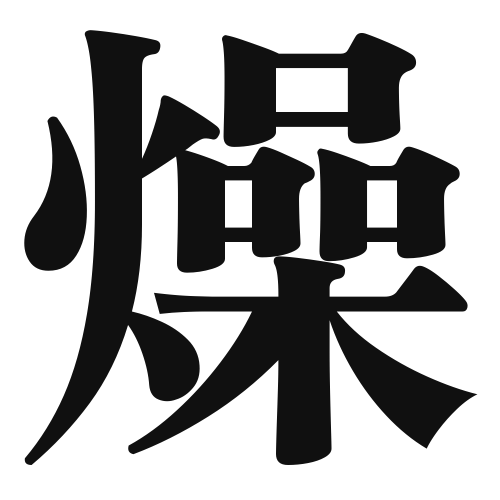1. Overview of Meaning
The kanji “燥” (pronounced “sou”) generally means “dry” or “to dry.” It is often used to describe a lack of moisture or humidity in the air or in materials.
2. Formation and Radical
Formation of the Kanji: The kanji “燥” is a phonetic compound (形声文字) that combines the radical for fire (火) and a phonetic component that suggests its pronunciation.
Radical: The radical of “燥” is 火 (hi), which relates to fire, indicating a connection to heat and dryness.
3. Examples of Usage
Common Words and Phrases: Some common words that include “燥” are “乾燥” (kansou – dryness) and “燥音” (souon – dry sound).
Example Sentences in Daily Conversation:
- この季節はとても乾燥しています。 (Kono kisetsu wa totemo kansou shiteimasu.) – This season is very dry.
- 肌が燥しているので、クリームを塗ります。 (Hada ga sou shite iru node, kuriimu o nurimasu.) – My skin is dry, so I will apply some cream.
4. Synonyms and Antonyms
Similar Kanji: A similar kanji is “干” (kan), which also means “to dry” but is often used in the context of drying food or laundry.
Opposite Kanji: The opposite kanji is “湿” (shitsu), which means “wet” or “moist,” indicating the presence of water or humidity.
5. Cultural and Historical Background
Relation to Japanese Culture: In Japanese culture, the concept of dryness is significant, especially in relation to climate and agriculture. Dry seasons can affect crop yields and daily life.
Proverbs and Idioms: One common saying is “乾燥注意報” (kansou chuihou), which means “dryness warning,” often used in weather reports to alert people about dry conditions that may lead to health issues or fire hazards.
